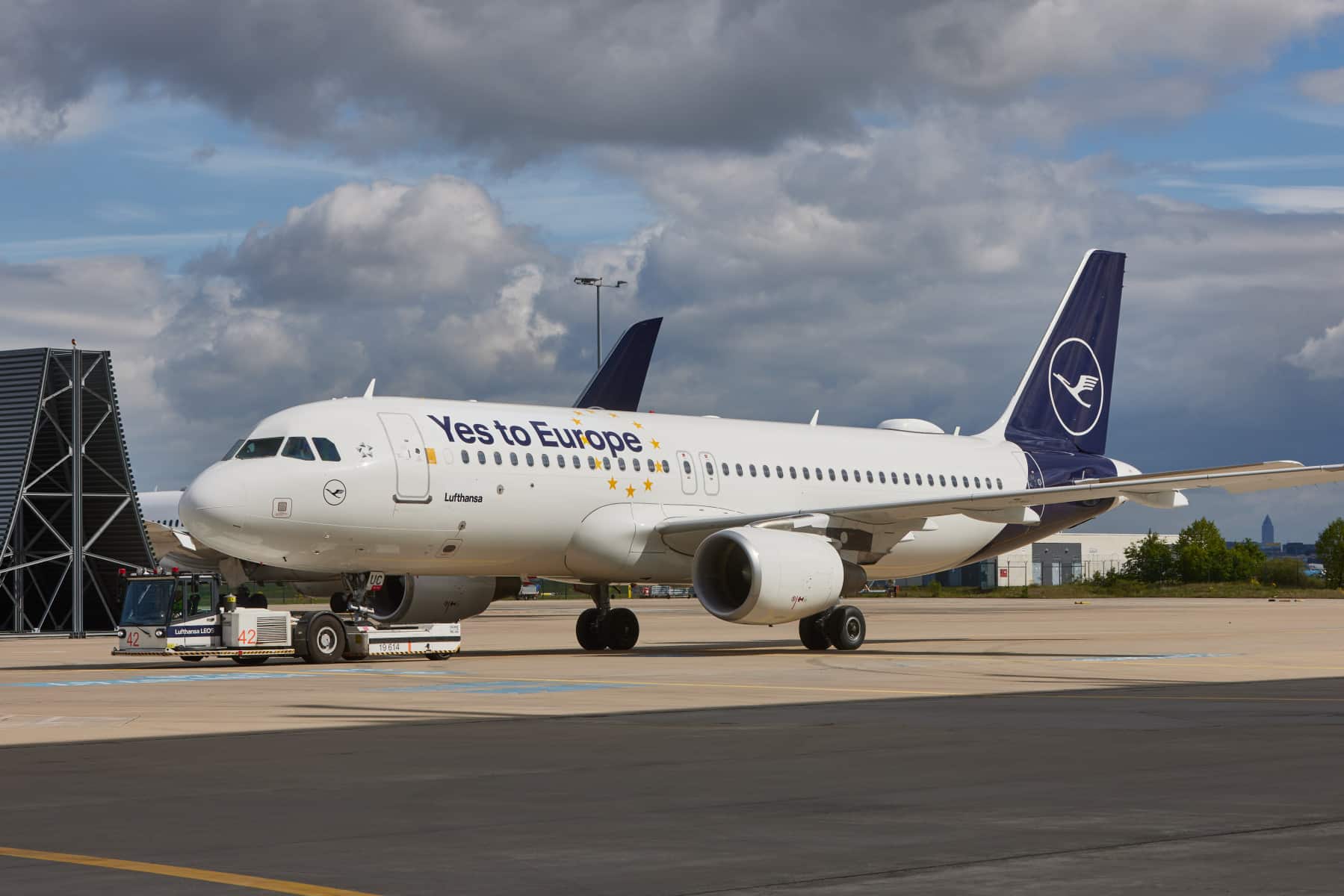- Airline integrates 77 aircraft into its fleet and creates 3,000 new jobs in just nine months
- 54 kilometres of material made into uniforms, 120,000 items of uniform produced, 12,000 hours of work invested in technology
- Eurowings CEO Thorsten Dirks: “We have expanded our position in the European aviation market and laid the foundations for our future.”
It’s a major project in record time: on Monday (27 August), after a mere nine months, Eurowings will integrate the last of a total of 77 aircraft into its fleet. The aircraft in question is an Airbus A320 from lessor ‘Magnetar’ with 174 seats and the registration D-ABDT.
All these machines were previously in service for Air Berlin and were sold off or leased out by the respective owners following the airline’s bankruptcy in August 2017. “Our integration project, which has been managed in record time, is unprecedented in European aviation,” says Eurowings CEO Thorsten Dirks.
According to Dirks, Eurowings employees have achieved the “extraordinary” – and he is justifiably proud of this. “Air Berlin was in the market for 40 years. In less than 40 weeks, millions of passengers have access again to a large proportion of the flight capacities that were lost due to Air Berlin’s exit and as a result, we prevented the collapse of German air traffic.” Dirks also stresses that by doing this Eurowings has expanded its position in the European air traffic market.
In addition to the 77 aircraft, within a few months Eurowings has hired a large number of new employees, the bottom line being that it has created 3,000 new jobs in the cockpit, the cabin and on the ground. Among the new staff are many former Air Berlin employees who were threatened with unemployment due to the company’s sudden bankruptcy. “Our many new colleagues are also doing an excellent job and have made a major contribution to enabling us to manage the integration so quickly.”
Dirks also has a special thanks for the many helpers and partners outside the company, such as the Federal Aviation Office, “Everyone involved in the process has pulled together to help to make a very challenging project successful.”
In retrospect, the challenges of the last nine months have been huge for Eurowings. In addition to integration on the staff and fleet side, they included:
- 54 kilometres of material made into around 11,000 jackets, blazers, trousers and skirts as well as 21,000 blouses and shirts.
- 120,000 items of uniform – luggage, gloves, ties, scarves and much more – produced for the new crews.
- 15 tons of paper (documents) checked by the Federal Aviation Office in order to integrate all 77 aircraft into the Eurowings fleet.
- Ten tons of paint needed and used to repaint the aircraft in their new livery.
- 12,000 hours of work invested in the 77 aircraft by the technology department to prepare them for use in the Eurowings route network.
Thanks to its extra capacity, Eurowings is now the number one at six German airports: Cologne, Düsseldorf and Stuttgart and now Hamburg, Nuremberg and Hanover as well. The airline is also recording strong growth at other important locations, in some cases up by more than 30 percent. On routes to and from Majorca alone, Europe’s number one holiday island, Eurowings’ passenger numbers have almost doubled. In total, more than 19 million passengers have taken off with Eurowings this summer, around 17 percent more customers than in the same period last year.
At the same time, Eurowings has consistently taken measures to increase stability in its flight operations, including larger buffers in flight schedules, up to 50 percent more terminal and call centre staff and building up greater reserves in the course of increasing to 77 aircraft. Dirks reports, “All these measures have already made a noticeable improvement to our flight operations, given that we experienced a difficult start to the summer with an unusually high number of flight cancellations. We will continue to mobilise additional resources and staff over the next few months so that we can return as quickly as possible to offering what our customers rightly expect of us: safe, comfortable but also punctual and reliable flights.”
Dirks is convinced that the one-off investment in expanding Eurowings’ capacity this year will soon pay for itself, “In years to come, anyone looking back on 2018 will see that this was the year in which Eurowings laid the foundations for a successful future.”
Cologne/Bonn, 23 August 2018

![[Pics] Flying for Unity: Lufthansa Group unites four airlines to champion European identity ahead of the elections](https://www.aviation24.be/wp-content/uploads/2024/05/20240513_113543-scaled.jpg)

